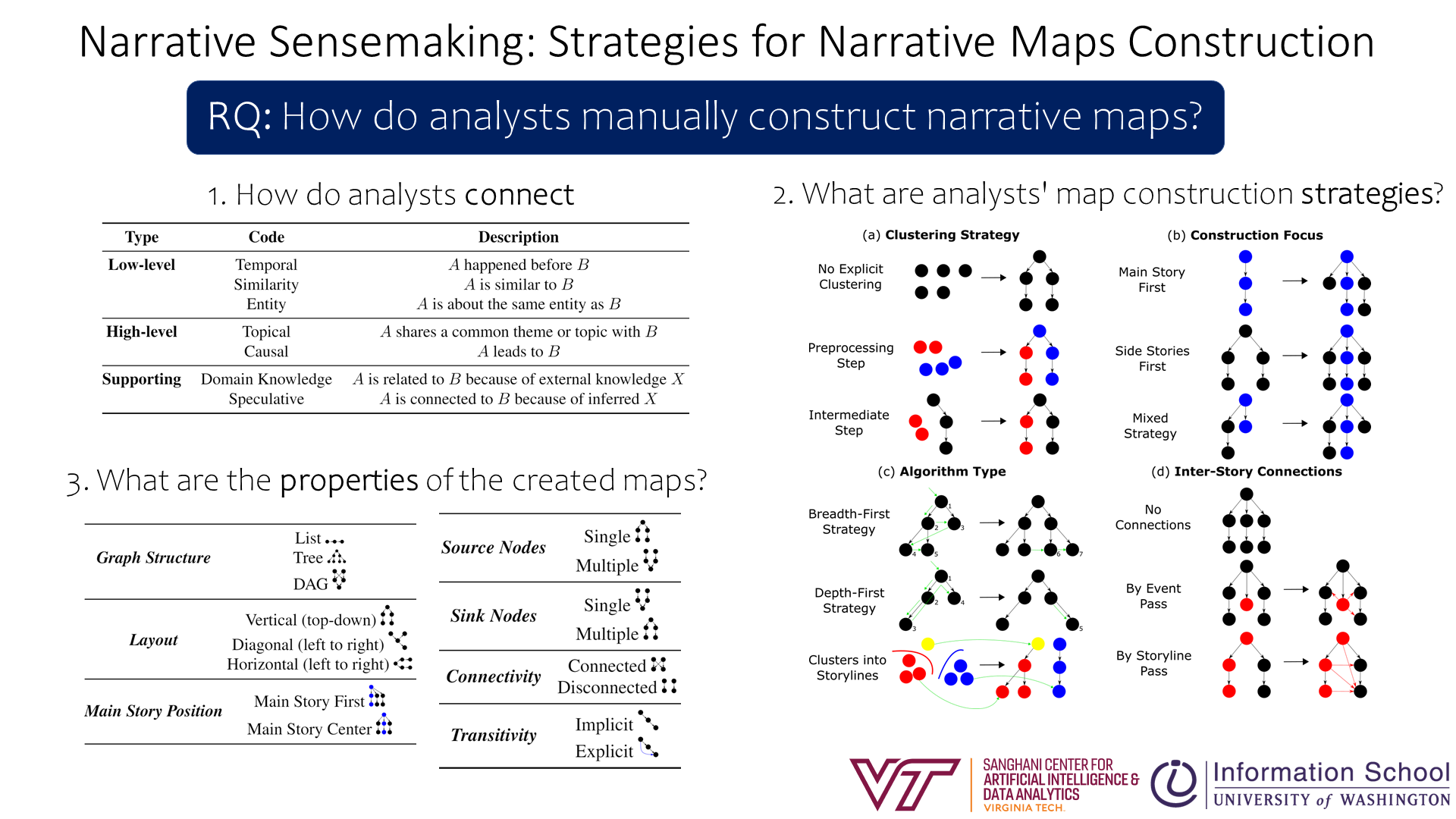Narrative Sensemaking: Strategies for Narrative Maps Construction
Brian Felipe Keith Norambuena, Tanushree Mitra, Chris North
External link (DOI)
View presentation:2021-10-27T13:30:00ZGMT-0600Change your timezone on the schedule page
2021-10-27T13:30:00Z

Keywords
Social Science, Education, Humanities, Journalism, Intelligence Analysis, Knowledge Work, Data Analysis, Reasoning, Problem Solving, and Decision Making, Visual Representation Design, Human-Subjects Qualitative Studies, Text/Document Data
Abstract
Narrative sensemaking is a fundamental process to understand sequential information. Narrative maps are a visual representation framework that can aid analysts in their sensemaking process. Narrative maps allow analysts to understand the big picture of a narrative, uncover new relationships between events, and model connections between storylines. We seek to understand how analysts construct narrative maps in order to improve narrative map representation and extraction methods. We perform an experiment with a data set of news articles. Our main contribution is an analysis of how analysts construct narrative maps. The insights extracted from our study can be used to design narrative map visualizations, extraction algorithms, and visual analytics tools to support the sensemaking process.